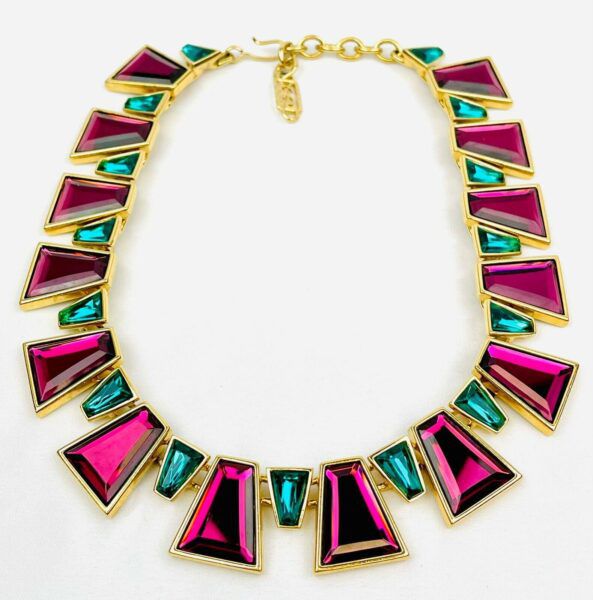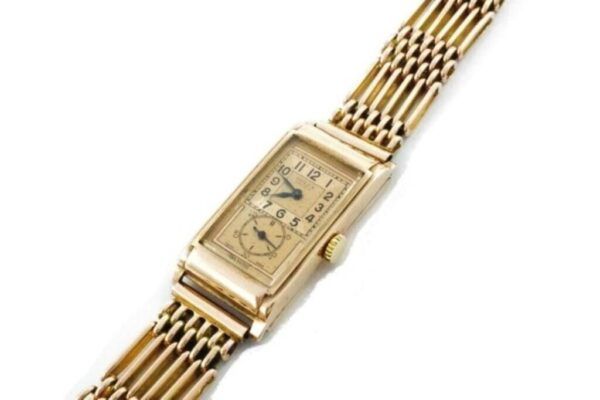#YSL #Lacroix #Monets #Haughty #Designer #Jewelry #Collaborations #WorthPoint
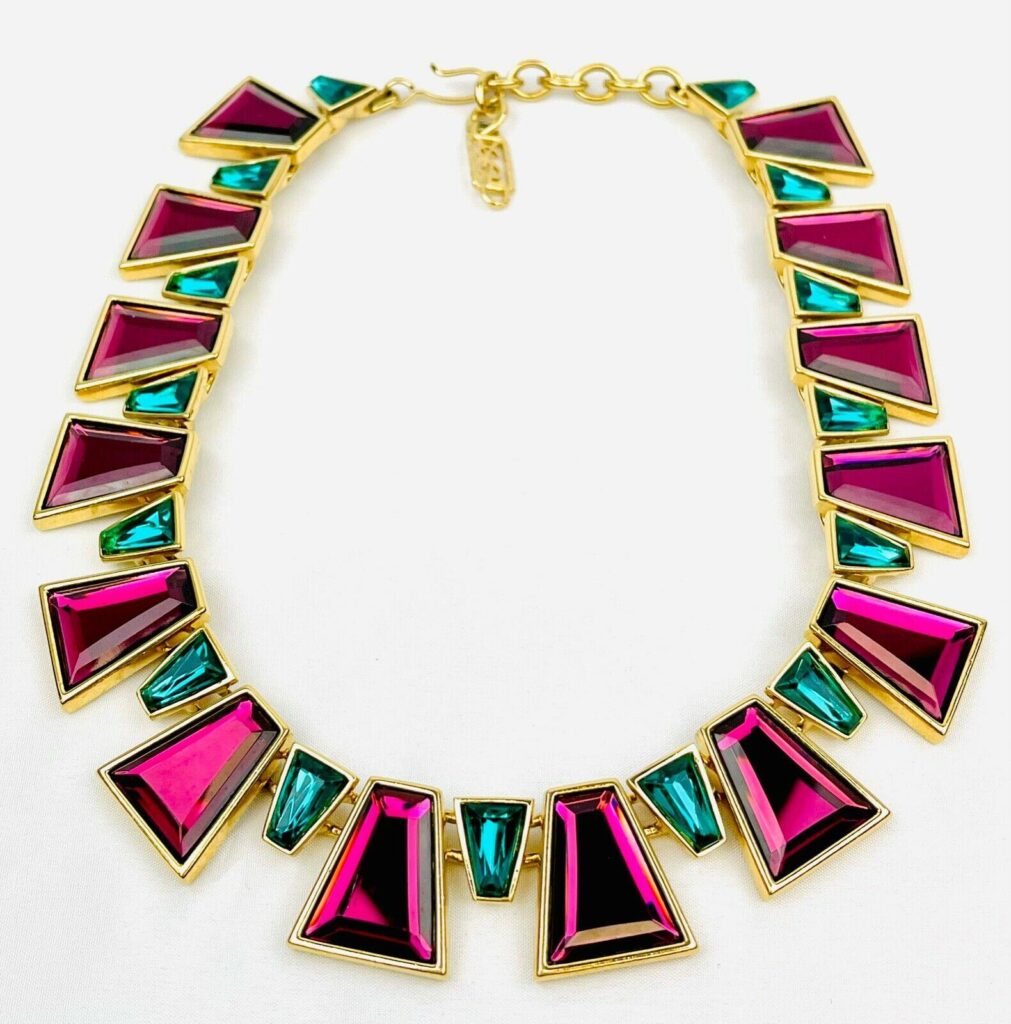
When I was a fashion-conscious young woman who owned way too many shoes in the 1980s, hair was big, and so was the adornment. I discovered vintage jewelry late in the decade, but I also saw some amazing accessories I longed to own while working part-time at Sakowitz (a Texas-based luxury retailer that was big back then) and Saks Fifth Avenue in my hometown of Houston. Yes, I used my employee discount to buy jewelry on occasion, but what I admired and what I could afford were two different issues. Some things never change, and I’m still admiring some of those same pieces all these years later.
One of the things I wish I’d been able to buy and stash away back in the ’80s and ’90s is some of the collaboration jewelry Monet produced in conjunction with well-known French couture houses, namely Yves St. Laurent (YSL) and Christian Lacroix. Mind you, these were fashion accessory lines that were mass-produced compared to true couture costume jewelry. Nevertheless, the quality is very nice, and these pieces feature some amazingly colorful rhinestones and bold designs that I absolutely adore.
One of the most interesting aspects of this jewelry is that sellers usually just describe it as YSL or Christian Lacroix with no mention that Monet produced it. The simple reason is that the Monet name doesn’t appear on these pieces. Sometimes sellers just haven’t researched their merch well enough to know that, but they may choose to leave that tidbit out since Monet doesn’t carry the clout of the French design houses. Regardless, Monet did make licensed jewelry for these couturiers and deserves some credit for that.
What Monet Made for Yves Saint Laurent
Monet began a relationship with YSL in 1981 that lasted for several years through a licensing agreement covering jewelry sold in the United States. Monet had a reputation for manufacturing quality that appealed to the French couture house. Two of Monet’s designers, Sandi Miller Burrows and Kerry McBride, created the styles produced for this line ranging from classic ‘80s looks to revivals of Byzantine pieces long favored by YSL.
Monet’s designers gleaned ideas from heading to Paris for the runway shows each season. Some pieces were close copies of YSL originals, while others were used for inspiration, including jewelry made to show with ready-to-wear lines and the house’s couture collections. Many of the couture pieces were produced by Robert and Patrick Goossens, who also reviewed the models Monet presented to YSL along with Loulou de la Falaise. Monet’s staff overseeing design and merchandising back in New York decided what was ultimately created, however, and not every new style approved was put into production.
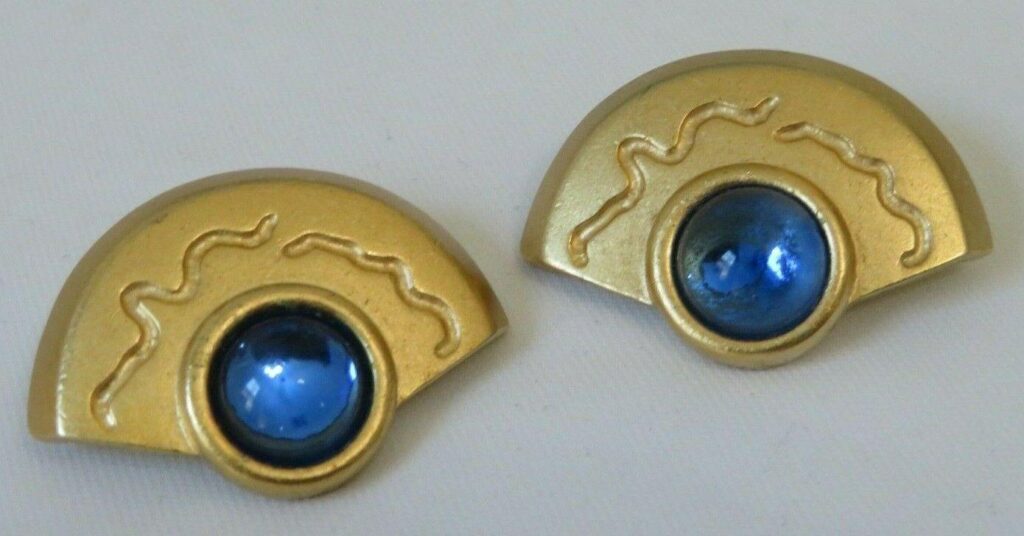
In her book Monet: The Master Jewelers, author Alice Vega aptly describes what makes this jewelry so special: “Most of the metal pieces had a dull matte or antique brushed finish. Anthracite plating was used often and was created especially for the YSL line. The stones used were always the finest Swarovski stones or the best blown or pressed glass from Germany.” Be aware that some of the blown glass stones in these pieces are mistakenly described as Gripoix by sellers. Other pieces are decorated with colorful enameling in lieu of stones.
Even though these items were mass-produced for all practical purposes, the lines were made in small quantities compared to some of Monet’s other collections. Some YSL launches were, in fact, limited editions that were signed and numbered. For this reason, you don’t run across them all that often today, and they’re high on the want lists of many collectors.
The Licensing Arrangement with Christian Lacroix
Moving into the 1990s, jewelry styles were straying from the bold looks of the 1980s, but that didn’t stop Christian Lacroix and Monet from joining forces in 1995 to create many eye-catching designs. These pieces, like YSL, were sold in upscale department stores, and Monet’s designers went through similar processes visiting Paris and presenting designs to the Christian Lacroix design team. The main difference in the design process is that Christian Lacroix retained the right to final approval of what would be put into production rather than Monet.
Heart styles are among those that were frequently approved. These designs echo some produced for Christian Lacroix by French jewelry makers. Others have Brutalist influences prettied up with rhinestones and glass cabochons. The elaborate “CL” logo associated with this brand can also be found in several designs that Monet produced. And like the YSL pieces, they are all very nicely made.
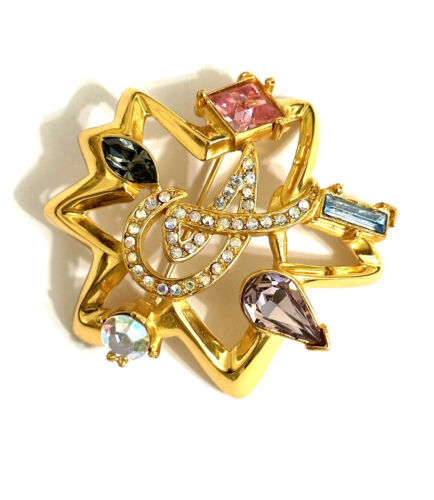
A Christian Lacroix brooch with a central “CL” logo.
Keep in mind when shopping that the designs produced by Monet are marked Christian Lacroix Jewelry or Christian Lacroix Bijoux. When you run across Christian Lacroix pieces with Paris or made in France on the signature plaque, you’ll know Monet did not make those.
This relationship was short-lived but produced a number of noteworthy designs. I had an opportunity to purchase some of these at a Costume Jewelry Collectors Int’l convention about a decade ago and passed on them. As usual, I was already over budget when that opportunity came along. Now I wish I’d dug a bit deeper in my wallet when I run across these pieces online today. We live and learn, and then learn again how fleeting opportunity can be for a collector. And so, the search continues for the “one that got away” at a price that’s down to earth.
Pamela Siegel is a freelance writer and author who has been educating collectors for more than two decades. In addition to three books on topics relating to antiques and collectibles, she frequently shares her expertise through online writing and articles for print-based publications. Pamela is also the co-founder of Costume Jewelry Collectors Int’l (CJCI) and the proprietor of Chic Antiques by Pamela.
WorthPoint—Discover. Value. Preserve.

